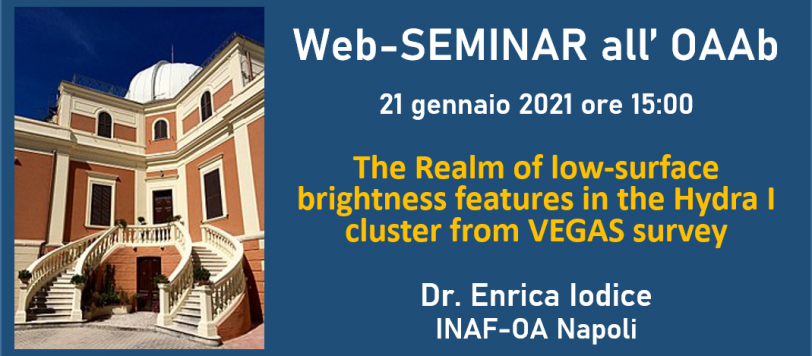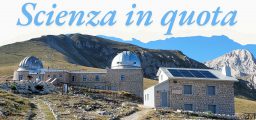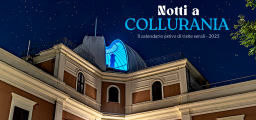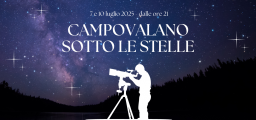The Realm of low-surface brightness features in the Hydra I cluster from VEGAS survey

Giovedì 21 gennaio alle ore 15:00, la dr. Enrica Iodice dell’INAF-Osservatorio Astronomico di Napoli, terrà il web-seminar dal titolo: The Realm of low-surface brightness features in the Hydra I cluster from VEGAS survey.
Abstract
In the last two decades, deep imaging surveys have given a huge boost to the study of the mass assembly in different environments, by providing extensive analyses of the light and colour distributions of galaxies out to the regions of stellar halos and intra-cluster space. In this context, the VST Early-type GAlaxy Survey (VEGAS) has occupied a pivotal role in exploring the low-surface brightness (LSB) universe and studying galaxy properties as a function of the environment.
VEGAS data allowed to i) study the galaxy outskirts, detect the intra-cluster light (ICL) and LSB features in the intra-cluster/group space; ii) trace the mass assembly in galaxies, by estimating the accreted mass fraction in the stellar halos and provide results that can be directly compared with predictions of galaxy formation models; iii) provide the spatial distribution of candidate globular clusters (GCs) in the galaxy outskirts and in the intra-cluster space; iv) detect ultra-diffuse galaxies.
To date, using about 250 hours of total observing time, VEGAS has already covered ~90 deg^2 around ETGs in groups and clusters. By the end of the survey (2021), VEGAS will have collected a total of 55 targets (individual galaxies as well as groups and clusters), with a spatial coverage of ~110 deg^2, spanning a halo mass range from 10^10 – 10^14 M⊙.
The Hydra I cluster is a target of the VEGAS survey. In this talk I will present the preliminary results obtained from the deep g and r-band mosaics, covering an area of 1×2 deg^2 (~ 1 Rvir). They include the detection and study of a first sample of ultra-diffuse galaxies, the LSB features in the galaxy outskirts and the ICL in the core of the cluster.
Web-seminar ad accesso riservato.
VIDEO del SEMINARIO sul CANALE YouTube dell’Osservatorio Astronomico d’Abruzzo






Comments are closed.